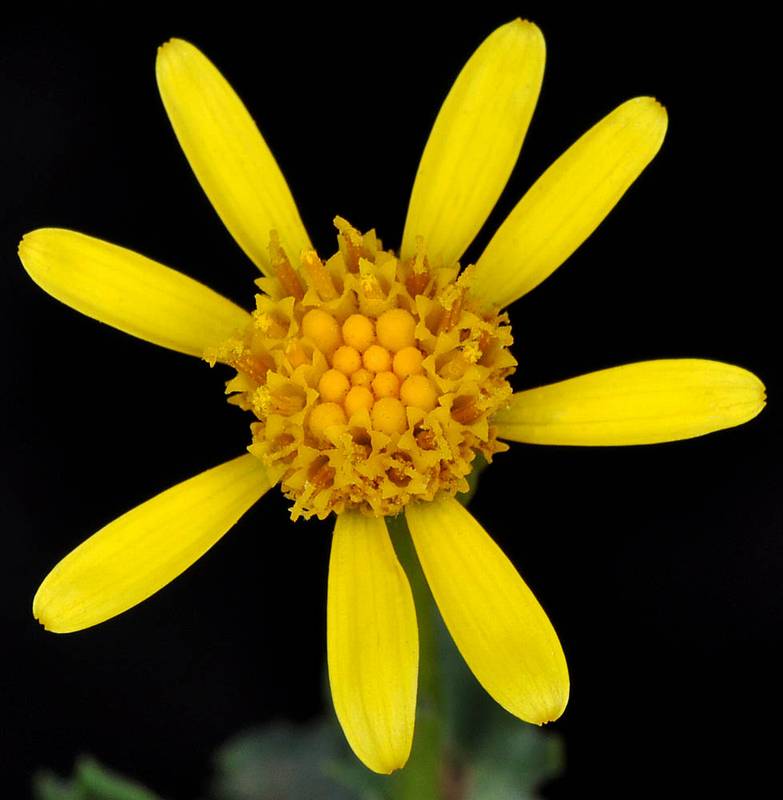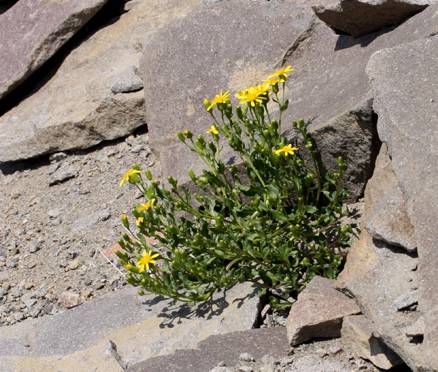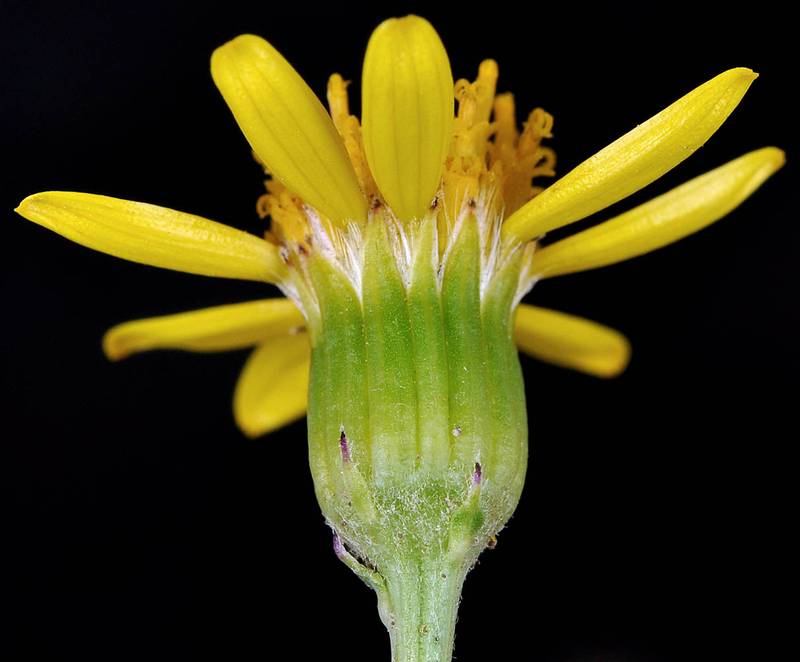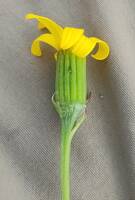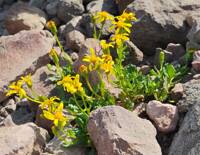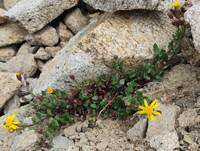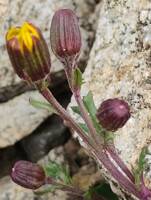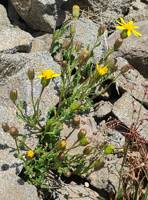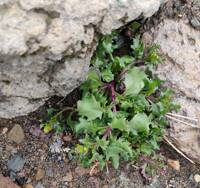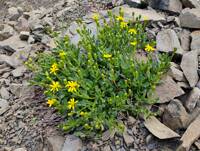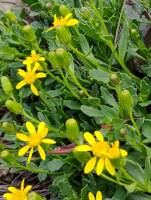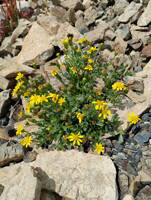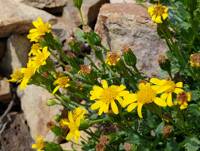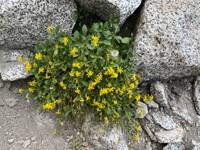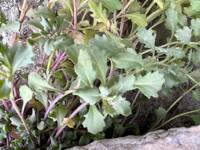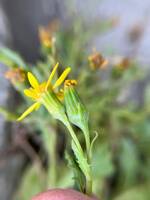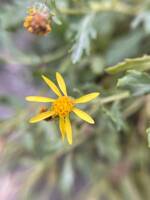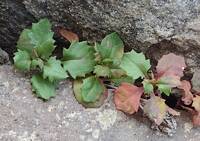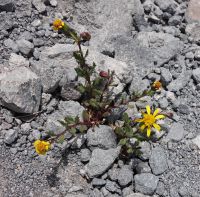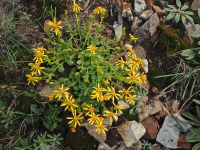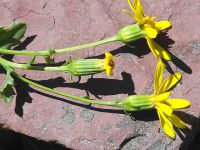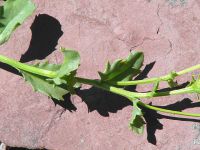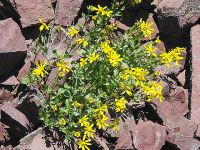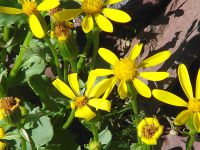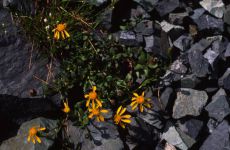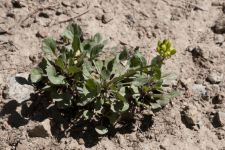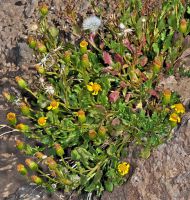Distribution: Occurring on both sides of the Cascades crest and in the Olympic Mountains in Washington; British Columbia to California, east to Alberta, Montana, Wyoming, and Utah.
Habitat: Open, rocky slopes at high elevations in the mountains
Flowers: July-September
Origin: Native
Growth Duration: Perennial
Conservation Status: Not of concern
Pollination: Bumblebees, bees, butterflies, flies, beetles
Glabrous perennial, somewhat succulent, from a taproot, freely branched from a decumbent base, about 1 dm. tall, or the stem somewhat longer and sprawling.
More or less toothed, 1-4 cm. long and up to 2 cm. wide, well distributed along the stems, the lowermost ones reduced, the others mostly obovate to spatulate, tapering to a narrow or shortly-petiolate base.
Single heads terminating the branches, usually with a short peduncle; involucre 7-12 mm. high, the principle bracts about 13; rays 6-10 mm. long, yellow.
The small plant, never strictly upright, with many small, rather succulent leaves on the stems and no basal leaves, separates this species from the others.
Publication: Fl. N. Amer. 2: 445. 1843.
-
var. fremontii – dwarf mountain groundsel
 Occurring on both sides of the Cascades crest and in the Olympic Mountains in Washington; British Columbia to California, east to Alberta, Montana, Wyoming, and Utah.
Occurring on both sides of the Cascades crest and in the Olympic Mountains in Washington; British Columbia to California, east to Alberta, Montana, Wyoming, and Utah.
PNW Herbaria: Specimen records of Senecio fremontii in the Consortium of Pacific Northwest Herbaria database
WA Flora Checklist: Senecio fremontii checklist entry
OregonFlora: Senecio fremontii information
E-Flora BC: Senecio fremontii atlas page
CalPhotos: Senecio fremontii photos

